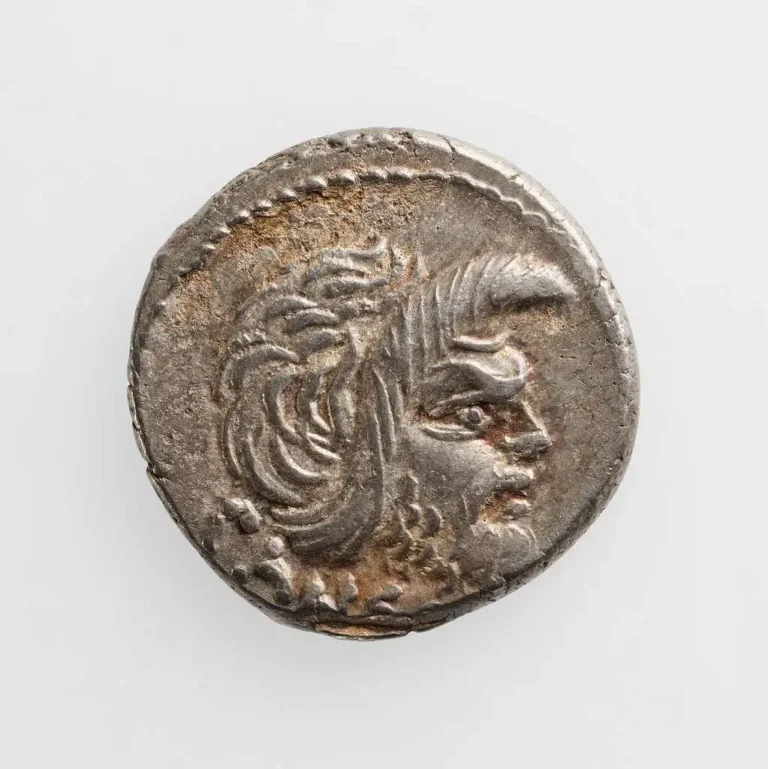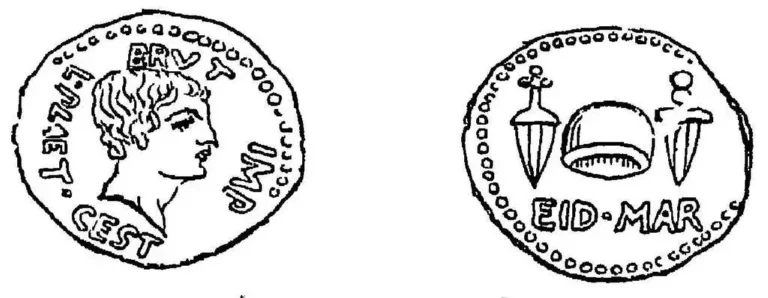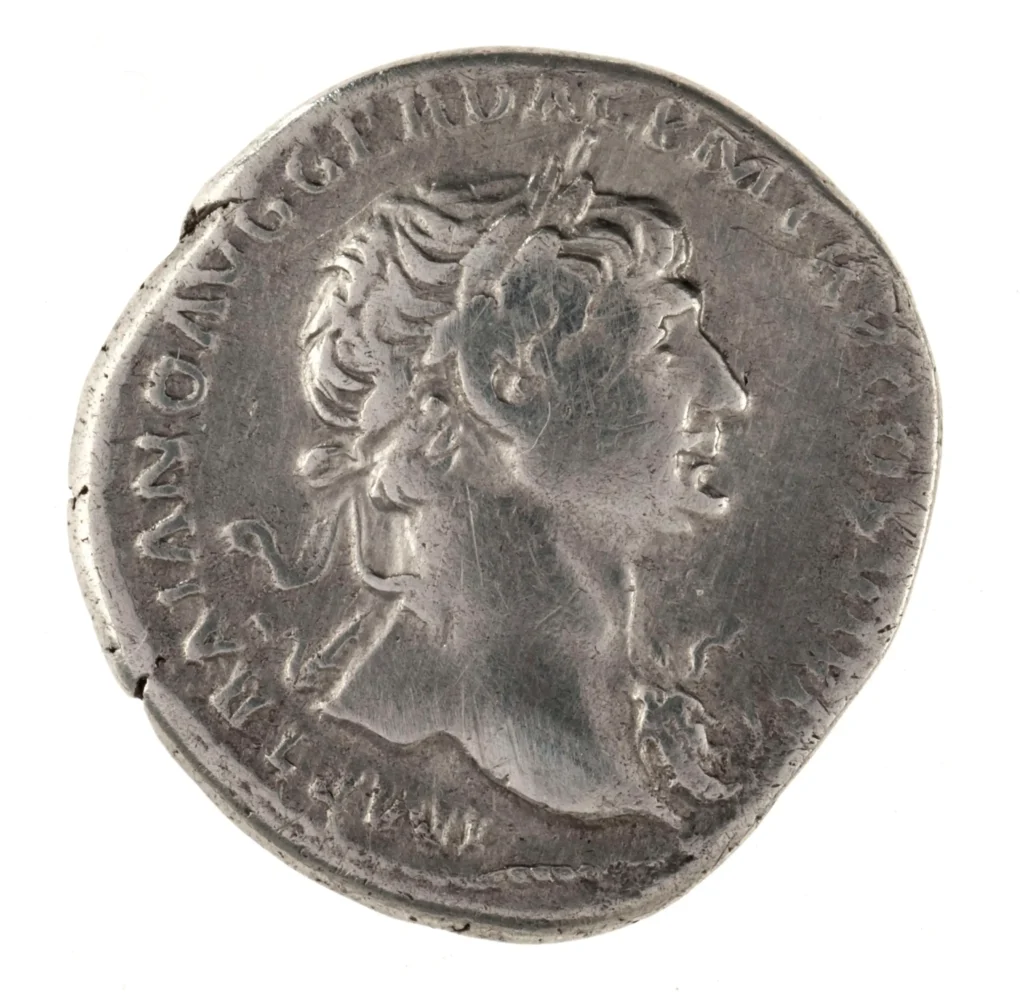The Roman denarius coin is a symbol of the strength of Rome and holds a significant place, in history as a key component of the empires financial system since its inception in 211 BCE It was not just limited to Rome but had a global influence, on the ancient world economy as an emblem of Roman authority and prosperity.
The denarius coin plays a role, in how we perceive history and culture as it provides insights into political messaging and artistic expressions of ancient Rome through its detailed engravings and writings on it. This article seeks to delve into the denarius attributes and its importance within communities while highlighting noteworthy surviving specimens that continue to endure over the years. By studying this currency item we can uncover information, about the routines of individuals and the larger economic frameworks of ancient Rome.
Table of Contents
TogglePhysical Characteristics of the Denarius Coin
The Roman denarius coin was a part of the Roman money system and it had distinct physical characteristics that changed over time as well. The original denarius was made up of 4 ½ grams of silver which was equal, to 1, out of every 72 parts of a pound. However this weight saw adjustments as time went on throughout the coins existence.
During the reign of Augustus, from 27 BC to 14 AD the denarius coins weight was reduced to 3·9 grams which was equivalent to 1⁄84 of a pound (libra). This trend of decreasing weight continued over time and during Neros rule (AD 37–68) the coin weighed 3·4 grams or 1⁄96 of a pound (libra). The debasement process carried on as later Roman emperors further decreased its weight to, around 3 grams by the end of the century.

Silver Content
The amount of silver, in the denarius was key in deciding its worth and quality over time. The denarius initially had a silver content of, than 90 percent purity during the 1st century AD but this level of purity changed as it circulated.
Over the years the amount of silver, in the denarius coin varied greatly mostly mirroring the changing economic situations in the Roman Empire. As we reached 200 AD it contained than 60 % silver and by 300 AD this dropped significantly to just 5 %. This sharp decline in silver content was a method called debasement which was used to create coins especially, during periods of conflict or financial pressure.
The structure of the denarius plays a role, in determining the age of these coins and offers clues about the economic conditions during their production era. Consider this; a coin minted in an era could contain 35% silver on average which falls within the typical composition range seen in Roman denarii, from that period.
It’s interesting to point out that the outer layer of denarius coins differs from their composition because of a phenomenon known as surface enrichment. In this process noble elements, like silver tend to be more concentrated at the surface while base metals such, as copper are reduced in amount. This means that determining the silver content of a coin usually involves examining its core rather than just focusing on its outer surface.
Minting Process
Producing denarii was a process that required steps and specialized methods to be implemented by the Romans, who utilized two main techniques, namely hot pressing and cold pressing, for coin minting.
In the pressing technique used to create coins or metal blanks in times involved cutting metal bars into pieces and shaping them by hammering them into desired forms or shapes called flans or blank coins. It was practice to subsequently soften these flans by heating them in an oven before moving on to the step where they were positioned between two dies made of either bronze or iron based on the type of coin being crafted. Finally a hammer was employed to carefully imprint the design onto the coin through striking the dies.
In contrast to cold pressing methods where metal is shaped at room temperature using pressure alone; hot pressing involves heating the metal in a furnace until it reaches a soft or molten state before being either poured into molds or rolled into sizeable sheets that are subsequently hammered into desired shapes on an anvil with the aid of specialized tools like tongs, for handling the heated metal and hammers for shaping purposes.
The mint making process took place in workshops called mints that looked similar, to blacksmith shops. These places had the ability to create a quantity of coins; its estimated that a group of workers could produce around 20 000 coins every day. During the century Romans minted 17 million denari annually indicating the vastness of coin manufacturing, in ancient Rome.
The making of dies played a role in the minting process in the day. Although the precise technique is not fully known to us today the prevailing belief is that skilled craftsmen painstakingly crafted each die to capture the details and images depicted on denarii’s. Typically lasting for a period of around three to four months, under usage estimations indicate that an obverse die could generate anywhere from 23 000 to 47 000 impressions while a reverse die could endure anywhere from 11 000, to 28 000 impacts.
The Denarius in Roman Society
The Roman denarius coin had an impact, on the environment of ancient Rome by serving as the main silver coin in circulation and establishing itself as the foundation of Roman monetary system innovation. It was more than a currency. It embodied Rome’s prowess and reach in every facet of society ranging from vibrant marketplaces, to the distant corners of the empire.
Purchasing Power
The significance of currency, in terms of purchasing power offers intriguing perspectives on the economy of the era when contrasted with present day norms. In exploring its worthiness today versus then researchers have juxtaposed the earnings of Rome’s workers with those on minimum wage nowadays. Bread holds a position, in this evaluation as it was a component of the Roman diet.
During times a typical family possessed, around 140 grams of gold in wealth a sum that could buy nine loaves of bread each day on average back then. Fast forward to today’s households where the average income equivalent’s five times higher than that of ancient Rome allowing them to buy five times more bread daily. This observation indicates that even though our society has evolved with industrialization making money and goods available, than before the value and purchasing power of gold have shown surprising stability throughout history.
Use in Trade
The denarius played a role in transactions of all sizes, across the Roman Empires markets – whether buying spices from far, off lands or basic bread from nearby bakers. Making trade smoother and uniting the empire through commerce.
The denarius served a role, in Ancient Rome. Not as a currency for daily transactions but also as a method of governance and authority enforcement by the state through tax collection, in denarii and funding public projects and military endeavors across its extensive domains to uphold the empires structure and military prowess.
Military Pay
The denarius had a role, in the military structure as it transformed the way soldiers were compensated from receiving loot or land to regular salaries in denarii. This change led to a devoted army as soldiers could rely on predictable payment, for their dedication and service.
The starting pay, for the soldier in the army stayed consistent at 225 denarii per year over an extended time frame. In each coin there were 3.4 Grams of silver. Out of this income a sum of 50 denarii was taken out for food expenses. Another 60, for equipment costs. It was customary for soldiers to stay in service for a period of 25 years.
Pay grades within the military varied:
- Immunes or specialists (e.g., carpenters, engineers, musicians) earned 1.5 times the base salary.
- Optios, second in command of a century, received twice the base salary.
- Centurions, of which there were 59 in a legion, were paid according to seniority.
- The Primus Pilus, the most senior ranking centurion, earned 17 to 20 times the base pay.
Throughout history rulers boosted soldiers salaries to ensure their allegiance. Domitian upped the pay to 300 denarii’s and later Severus pushed it to 500 denarii’s. Soldiers received their wages thrice annually at ceremonies a practice that was later altered by Domitian to four payments, per year.
The denarius played a role, in the payment system of the empire and had significant implications for its stability across various regions and territories under its control. However when the empire encountered difficulties the denarius value started to diminish. By the middle of the century it had essentially lost all worth due, to being debased resulting in inflation and economic uncertainty. This depreciation significantly affected payments which in turn impacted the loyalty and efficiency of the army and played a part in the eventual downfall of the empire.
Notable Denarii throughout History
Over the years and centuries gone by scores of denarii were. Circulated, woven with tales that shed light on the Roman Empires history. These coins act as portals to an era revealing glimpses of the people who handled them and the leaders who authorized their minting. Among the multitude of denarii some truly shine for their importance, rarity and the narratives they depict about Roman culture.
Julius Caesar's Denarius
Julius Caesar’s coins known as denarii were groundbreaking in their design and function. They were the ones to showcase a Romans image which deviated from the usual practice and emphasized Caesars significant impact. This daring decision not showcased Caesars authority. Also added to the aura of charisma surrounding him.
Caesars earliest coins were created while he was leading campaigns, in regions with a mint that likely moved alongside his army during its travels. This currency included silver denarii that highlighted his victories in Gaul, Sprain and North Africa. They featured symbols of triumph and power. One remarkable coin, from 47 to 46 BC showcases Caesars lineage. The front side portrays the goddess Venus while the back depicts the figure Aeneas rescuing his father from the flames of Troy.
As Caesar gained power over time and solidified his rule, as dictator for life in 44 BC new silver denarii coins emerged with the inscription of this title. These coins showcased Caesars image with a wreath around his head a representation of his recognized dominance. The final coin crafted before Caesars assassination on the Ides of March showed him wearing a priests veil, as Pontifex Maximus solidifying both his political sway.

Brutus' 'Ides of March' Coin
One of the known and debated denarii is the ‘Ides of March’ currency created by Marcus Junius Brutus around 43 to 42 BC to honor Julius Caesar’s assassination on March 15th in 44 BC. The coins appearance carries a symbolism that sets it apart as one of the rarest and desirable ancient Roman coins.
On one side of the coin is a portrait of Brutus himself which goes against the norm of not depicting living people, on coins. The other side is also interesting with a cap of liberty and two daggers on either side below which ‘EID MAR’ (Ides of March) is inscribed. This design symbolizes both freedom and a cautionary message, to those who challenge the government.
The ‘Ides of March’ coin is extremely scarce; 100 silver pieces are known to be, in existence. Only three gold versions remain today. In the year 2020,a gold coin was sold at an auction for a £3,240,000’ highlighting its importance and worth, in the world of numismatics.

Other Significant Issues
Caesar and Brutus may have the coins; however in Roman history there were several other notable denarii that were minted as well. Augustus who followed Caesar kept up with the practice of using coins for propaganda. His denarii frequently portrayed his family members connecting his rule, with approval and plans, for succession.
Emperors such, as Nero and Marcus Aurelius also influenced the denarius coins history alongside Trajan. Nero initiated a debasement process due to constraints by decreasing the content in the coin by about 20% marking the beginning of a series of similar actions by later emperors that slowly diminished the denarius worth, over time.
During times, in Rome’s history and its economic struggles being a concern for emperors such as Marcus Aurelius who made efforts to uphold the value of the denarius currency but unfortunately by the middle of the third century continual debasement had led to a significant decline, in its real worth.
The evolution of the denarius, from a coin to a devalued form of money parallels the rise and fall of the Roman Empire itself along its historical journey spanning 500 years provides historians with key perspectives on the economic elements that played a role in the downfall of Rome from the political maneuvers of Caesar and Brutus to the transition from imperial splendor, to financial deterioration. The tale of Rome is engraved in silver on these modest yet profoundly impactful coins.
Conclusion
The Roman denarius coin has made a lasting impact, on history by revealing insights into the social aspects of Rome’s society and politics. The transformation of the denarius from a coin to a less valuable currency reflects the ebb and flow of the mighty Roman Empire itself. This coins physical attributes, purpose in society and notable instances offer us a connection, to times enabling us to understand both the everyday existence and larger structures of the Roman civilization.
The history of the denarius is a tale filled with power struggles and the influence of propaganda and economic factors, in times. Starting from Julius Caesars coin designs to Brutus bold ‘Ides of March’ currency stamping act – these tiny silver coins carried messages that left a lasting impact on empires. By examining these coins closely gives us insights into the dynamics that played a role in building and eventually challenging one of the most significant civilizations in history. The denarius is not an artifact, from the past. Also serves as a reminder of how currencies have profoundly shaped human society over time.



